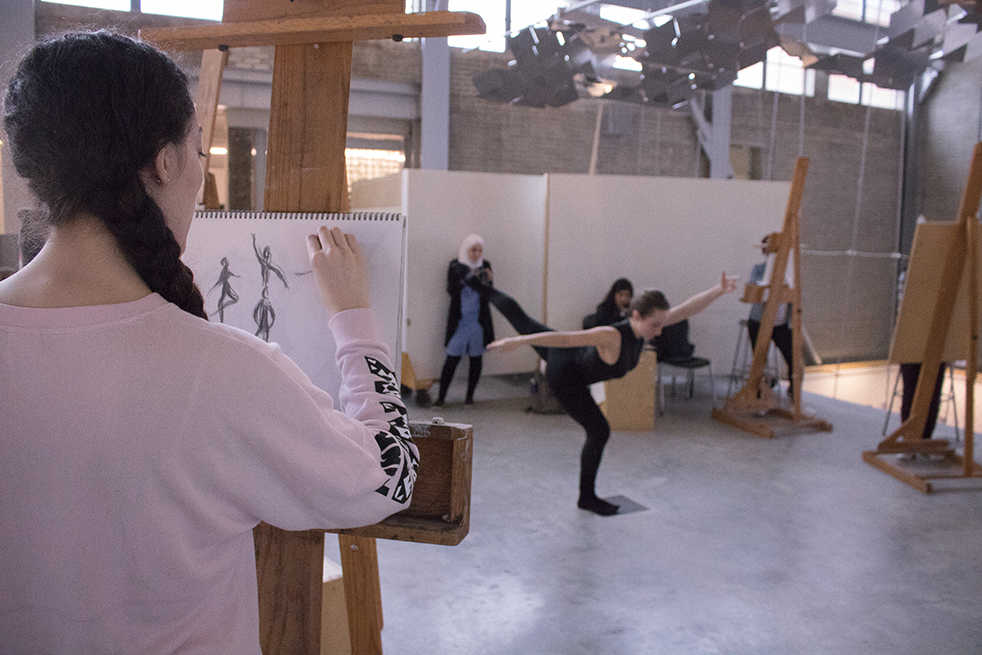In the simple words of Socrates in a conversation with the artist Parrhasius, “Painting may be defined as a representation of objects.”
This natural representation is what many artists are trying to capture, and it is what students in Lane Duncan’s “The Art of Drawing” class are attempting to do. Duncan began his architecture journey at Tech as a student in the late 60’s, and he is currently a senior lecturer at Tech, having taught for more than 15 years. In the winter of 2013-2014, Duncan was a visiting artist/ scholar at the American Academy in Rome, Italy. The academy is self-described as, “the oldest American overseas center for independent study and advanced research in the arts and humanities.”
This independent study is fostered by collaboration between the visiting artists, who range from musicians and writers to architects and even theoretical mathematicians.
“You have everything at your disposal to study your subject,” Duncan said. “This place highly encourages interaction and learning from each other.” The collaborative environment in which Duncan was able to participate in Rome eventually led to the creation of his current course, “The Connell Workshop: The Art of Drawing.”
“When I came back here and had the opportunity to teach this first course in the fall [Drawing on Nature], my idea was that why don’t we teach a course that is open to everyone on campus,” Duncan said. “I have aerospace, architects, biomed, everybody. Then we try to make our own little academy here, using drawing as a means to explore the world around us and then come back here and discuss it.” Duncan wants students to learn actively rather than passively.
“By actively engaging in something, if you have to write about it or if you have to draw a picture of it, you tend to internalize it even more — the learning level is much higher,” Duncan explained. “It’s because it’s interactive and you try and you fail and then you try again. It’s not just memorize it, make a 100 and move on.”
The Art of Drawing class started in the spring of 2015 and allows around 15 students from different majors to explore hand drawing. The class is broken up into perception and conception to try to describe the way we see the world and the way we attempt to order the world. The perception part of the class focuses on still life drawing exercises and examining the work of the masters like Raphael, Michelangelo and Leonardo da Vinci.
“We start off the first six weeks with drawing skills and just how to draw,” Duncan said. “Then we transition over to why are we doing it, what are we looking at?”
The second half of the class that focuses on conception involves examining the role of geometry in architecture.
“We try to do almost everything we can in the class, no homework per se,” Duncan explained. “Most students keep doing it at home because they want to, and I certainly encourage it, but it’s kind of magic when you’re all in there doing it at once … There’s a point where you get in the zone, you just want to do it.”
And the class’s students do not have to be professional artists.
“They come in here and they have such an open mind, they do great,” Lane said. You don’t have to be a gifted artist to take the course.”
Each semester, there are several projects that take the ideas of perception and conception and bring them to life. Duncan has brought in guest lecturers from biology, architecture and art. One of this semester’s projects was a dance showcase by Danielle Sisson, first-year ARCH, who works as a faculty intern for Duncan. The two collaborate on different projects.
“When Danielle and I got together early last fall and decided to work together, I had no idea at first that she was a dancer,” Duncan said.
Sisson’s original goal after high school was to dance professionally, but a hip injury caused her to reconsider. She had past experience with architecture and decided to pursue that at Tech.
“The town I came from has a smaller population than Georgia Tech,” Sisson said. “I felt very confined and I wanted to get out. I went to some other schools that were top design programs, and they were very pretentious about the work they did.”
When visiting Tech, Sisson said it stood out for the opposite reason. Rather than students doing work because someone is looking over their shoulder, they are very self-motivated.
On Feb. 15, Sisson along with two other members of GT DanceTech showcased some of their work and explained the intent behind it while students made gesture drawings.
“We came in, we did a little routine and just asked them to watch,” Sisson said. “It’s showing how the body works and going beyond that, what the intention of the movement is.”
One of the goals of this collaboration is to show how the different arts can be connected to each other.
“Overall what we’re trying to do is just show that all the arts are just different languages of the same thing,” Sisson said. “People have this misconception when they come to art school that they’re all learning different things but there are a lot of similarities and common ground.”
“I hope that students take away just how deeply thoughtful really great artists are, whether it’s art or writing or dancing or music,” Duncan said. “You could sit in on a theory lecture in a music school as an accomplished artist and you would understand where they’re headed. You may not know how to carry a tune, but you could understand how they’re doing things. I hope students can take away an appreciation for both things.”
